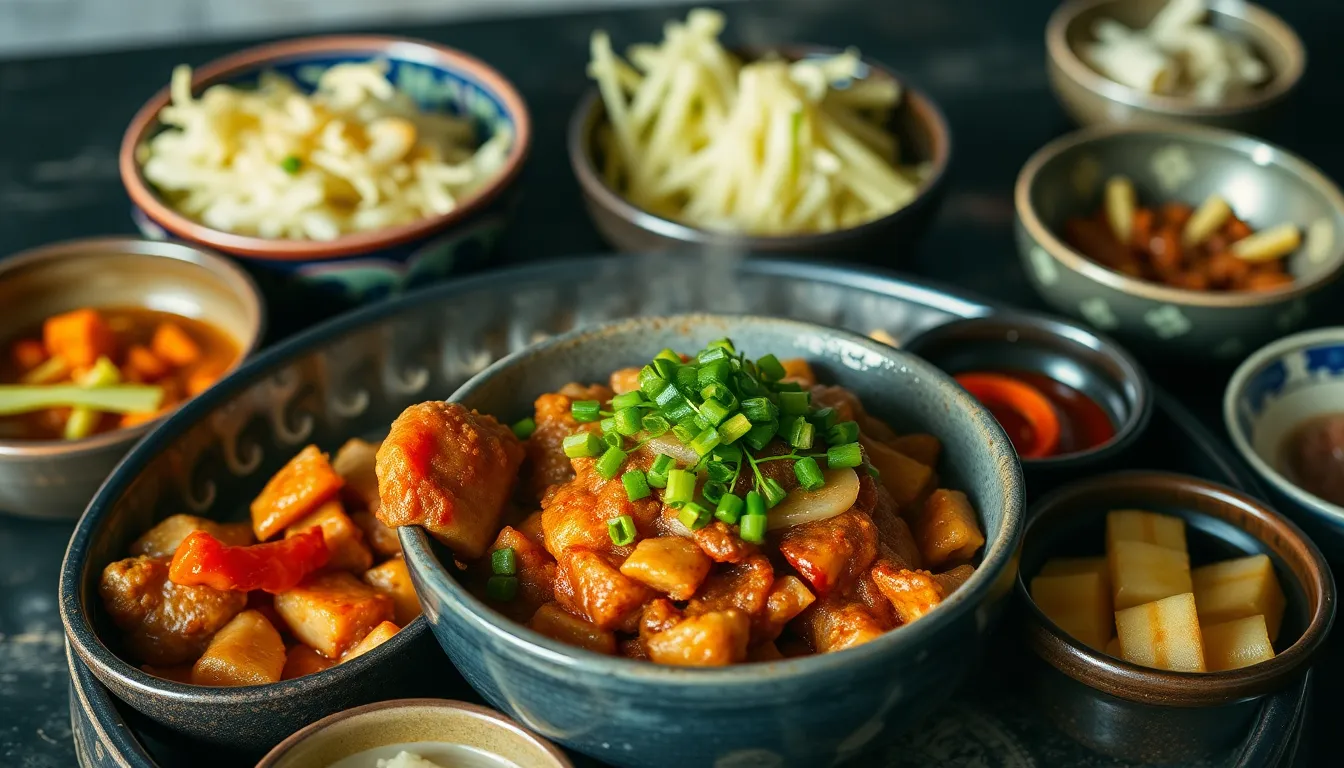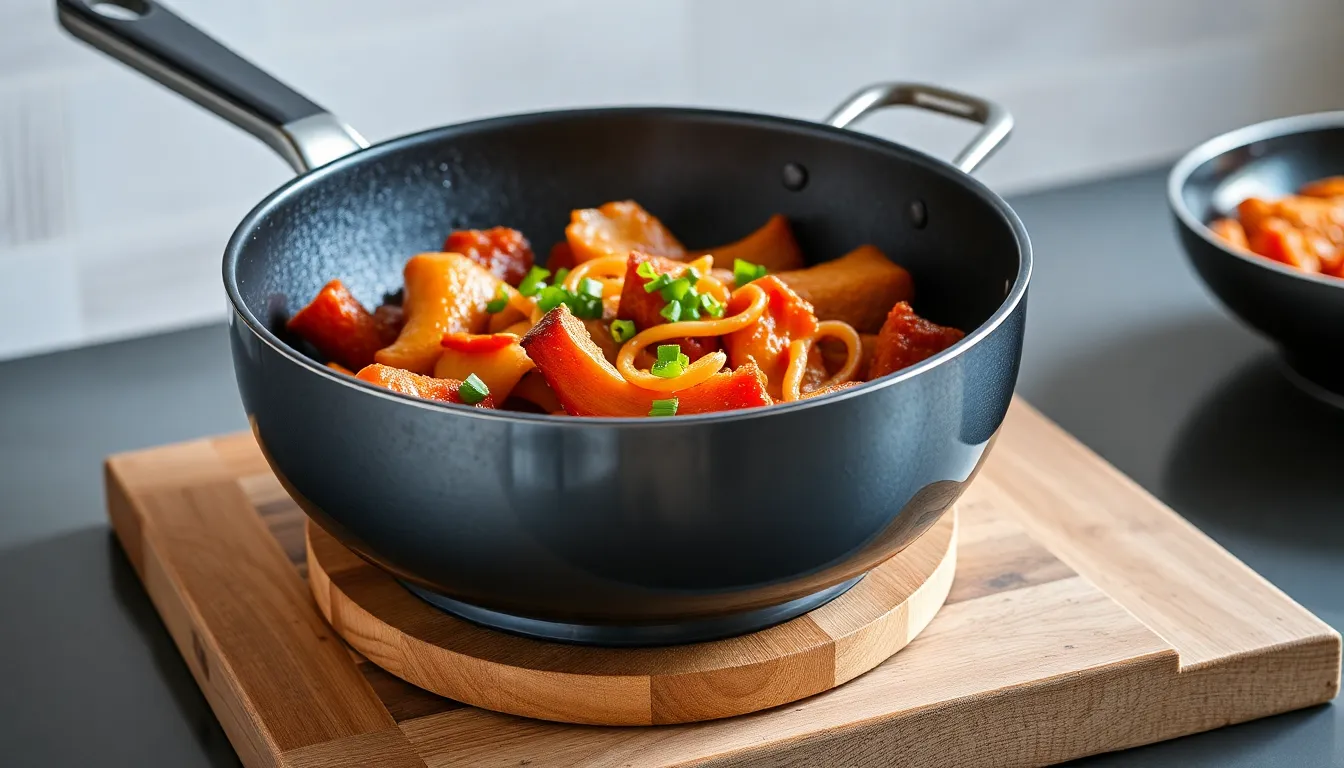From Bibimbap to Banchan: A Beginner’s Guide to Korean Home Cooking
Introduction
Korean cuisine is a vibrant tapestry of flavors, colors, and textures that reflect the rich cultural heritage of the Korean people. Known for its bold use of spices and fermentation, it showcases dishes that are not just meals but an experience steeped in tradition and history. At the heart of Korean dining lies the warmth of home cooking, where families gather around the table to enjoy a variety of dishes crafted with love and care.
This guide will take you on a culinary journey through the essentials of Korean home cooking, from the key ingredients that form the backbone of many dishes to iconic recipes that you can recreate in your own kitchen. Whether you are a novice cook or looking to expand your culinary repertoire, you’ll discover tips, techniques, and recipes that will inspire you to embrace this delicious cuisine.
1. The Heart of Korean Cuisine: Key Ingredients
1.1 Essential Staples to Stock Your Kitchen
Every great dish begins with quality ingredients. To embark on your Korean cooking adventure, stock your kitchen with the following essentials:
- Rice: The foundation of many meals, often served alongside various dishes.
- Soy Sauce and Gochujang: These flavor powerhouses form the base for marinades, stews, and more.
- Kimchi: A cultural icon that adds a punch of flavor and is a staple in almost every meal.
- Sesame Oil and Garlic: The aromatic duo that enhances the flavor of countless dishes.
1.2 Fresh Produce and Proteins
In addition to staples, incorporating fresh produce and proteins is essential for creating balanced and flavorful Korean dishes:
- Seasonal vegetables: Use fresh, local produce such as napa cabbage, zucchini, and mushrooms.
- Common meats and seafood: Pork, beef, chicken, and various kinds of fish or shellfish are frequently used.
- Tofu and plant-based options: Ideal for vegetarian dishes, providing protein and texture.
| Ingredient | Description | Usage Examples |
|---|---|---|
| Rice | Staple carbohydrate | Bibimbap, Gimbap |
| Gochujang | Spicy red pepper paste | Marinades, stews |
| Kimchi | Fermented vegetable dish | Side dish, ingredient in stews |
| Sesame Oil | Nutty flavored oil | Dressings, stir-fries |
2. Classic Dishes You Must Try
2.1 Bibimbap: A Colorful Rice Dish
Bibimbap, meaning “mixed rice,” is a signature Korean dish that brings together a variety of ingredients. Typically, it includes a base of warm white rice topped with sautéed vegetables, marinated beef, a fried egg, and a dollop of gochujang. The key to a great Bibimbap is all about balance and presentation.
Customize your Bibimbap by varying the toppings. Here are some ideas:
- Use seasonal vegetables like spinach, mushrooms, and carrots.
- Opt for bulgogi (marinated beef) or spicy gochujang chicken for protein.
- Add an extra crunch with toasted seaweed or sesame seeds.
2.2 Kimchi Stew (Kimchi Jjigae): Comfort in a Bowl
Kimchi Jjigae is a hearty stew that embodies the essence of comfort food in Korean cuisine. It’s made with kimchi, tofu, and often pork or tuna, simmered to perfection. The fermentation of the kimchi infuses the stew with a depth of flavor that warms the soul.
To make your Kimchi Jjigae:
- Start with a base of onion and garlic for flavor.
- Add your kimchi and protein of choice, then simmer with water or broth.
- Finish with tofu and green onions before serving.
Feel free to experiment with ingredients based on your preference or what’s available in your pantry!
2.3 Japchae: Sweet Potato Noodle Stir-Fry
Japchae is a delightful dish made from sweet potato noodles, stir-fried with an array of colorful vegetables and usually some type of protein. Its slightly chewy texture and sweet-savory flavor make it a favorite at celebrations and family gatherings.
To achieve the perfect texture in your Japchae:
- Soak the sweet potato noodles in warm water before cooking.
- Stir-fry quickly over high heat to ensure the noodles remain al dente.
- Add a mix of vegetables such as bell peppers, carrots, and spinach for color and nutrition.
3. Embracing Banchan: The Art of Korean Side Dishes
3.1 What are Banchan?
Banchan refers to the small side dishes served along with cooked rice in Korean meals. These dishes can vary widely in flavor and texture, providing a balance to the main course. They are not just meant to accompany a meal but to enhance the overall dining experience.
Common types of Banchan to explore include:
- Fermented or pickled vegetables, like kimchi.
- Seasoned vegetables, such as namul made from sesame oil and garlic.
- Soups or stews that complement the main dish.
3.2 Simple Recipes for Beginner Banchan
Here are two easy and delicious Banchan recipes to get you started:
Seasoned Spinach (Sigeumchi Namul)
This quick and nutritious dish combines fresh spinach with a few simple ingredients:
- 1 bunch of spinach, blanched
- 2 cloves of garlic, minced
- 1 tablespoon of sesame oil
- Salt to taste
Mix all the ingredients together, adjust seasoning, and serve chilled or at room temperature.
Korean Pickled Radish (Danmuji)
Bright and tangy, this pickled radish is a refreshing addition to any meal:
- 1 medium radish, peeled and sliced
- 1 cup of vinegar
- 1/2 cup of sugar
- 1/4 cup of salt
Mix vinegar, sugar, and salt until dissolved, then add radish slices. Let it marinate in the refrigerator for at least 24 hours for best results.
| Banchan | Main Ingredients | Flavor Profile |
|---|---|---|
| Sigeumchi Namul | Spinach, garlic, sesame oil | Savory, nutty |
| Danmuji | Radish, vinegar, sugar | Sweet, tangy |
| Gamja Jorim | Potatoes, soy sauce, sesame seeds | Sweet, salty |
4. Tools of the Trade: Essential Korean Cooking Equipment
4.1 Must-Have Kitchen Tools
Equipping your kitchen with the right tools can transform your cooking experience. Here are some essential items you should consider:
- Rice Cooker: This is a must-have for cooking perfect rice every time.
- Mandoline Slicer: Great for achieving uniform cuts, especially for vegetables.
- Wok or Stir-Fry Pan: Ideal for quickly cooking ingredients over high heat.
- Korean Stone Pot (Dolsot): Perfect for serving sizzling hot dishes like Bibimbap directly from the stove.
- Fermentation Jar: Useful for making homemade kimchi and pickles.
With these tools, you’ll be well-prepared to explore the world of Korean cooking. Enjoy the process of learning, experimenting, and savoring the flavors of Korea. Happy cooking!




